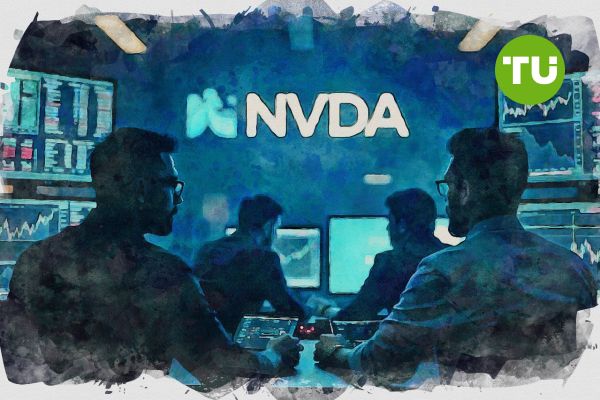Nvidia stock climbs 1.9% as AI demand offsets $15 billion China hit
 The company’s once-dominant market share in China has dropped from 95% to approximately 50%
The company’s once-dominant market share in China has dropped from 95% to approximately 50%
As of May 22, Nvidia stock is trading at $131.80, up 1.9% in the past 24 hours. The price action reflects a continuation of Nvidia’s strong rebound since the April lows, when the stock dipped below $90.
Highlights
• Nvidia is up 1.9%, with bullish technical indicators but facing resistance at $153.13.
• The company is benefiting from strong global AI demand despite losing market share in China due to U.S. export restrictions.
• Upcoming earnings on May 28 will be pivotal for the stock’s next move.
This recovery has been characterized by a break above the 200-day moving average—a traditionally bullish indicator that often suggests the resumption of an uptrend. However, Nvidia shares remain locked within a broader 20-week consolidation range. The technical ceiling is evident around $153.13, which is currently identified as a critical resistance level and a potential buy trigger for momentum-driven investors.
Support zones have formed at $115, closely aligned with the 50-day simple moving average (SMA), and a deeper level around $96, which corresponds to the March breakout region. These areas are likely to attract dip buyers should the stock undergo a short-term pullback. Meanwhile, the Relative Strength Index (RSI) is creeping toward the overbought threshold of 70, indicating that bullish momentum is strong, but a pause or minor correction may be imminent if investor enthusiasm overheats.
NVDA stock price dynamics (March 2025 - May 2025). Source: TradingView.
Volume patterns have been mixed, with recent sessions showing relatively light trading activity. This suggests that the most recent rally may lack broad institutional conviction. This is further supported by a C- rating on the IBD Accumulation/Distribution scale, which evaluates buying and selling by institutional investors. Despite positive price action, the lack of heavy volume and weak accumulation signals warrant caution, as breakouts without volume often fail to hold.
Market context: AI demand offsets export challenges
Nvidia remains at the epicenter of the global AI boom, continuing to benefit from explosive demand for data center GPUs and AI infrastructure. The company has recently announced new strategic partnerships, including a deal to supply advanced semiconductors to Saudi Arabian AI startup Humain. This move illustrates Nvidia's strong foothold in international AI development, reinforcing its role as a leading hardware provider for generative AI and machine learning applications.
Nevertheless, significant headwinds remain, particularly surrounding regulatory challenges. The U.S. government's expanded restrictions on AI chip exports to China have materially affected Nvidia’s business. The company’s once-dominant market share in China has dropped from 95% to approximately 50% over the past four years. CEO Jensen Huang has openly criticized these sanctions, warning that the policy may result in a $15 billion loss in sales and calling the restrictions a strategic misstep.
In response to diminishing opportunities in China, Nvidia is aggressively expanding its global footprint. The company is positioning itself as a key player in new AI initiatives across Europe and the Middle East, including national-scale data centers in the UAE and France. These developments underscore the strategic pivot Nvidia is making to hedge against U.S.–China decoupling risks and tap into new high-growth regions.
Сautious optimism ahead of earnings
All eyes are now on Nvidia’s fiscal Q1 earnings report, which is due on May 28, 2025. Analyst expectations are lofty, with consensus estimates predicting earnings per share of $0.88 on revenue of $43.26 billion. These figures would represent substantial year-over-year gains of 44% and 66%, respectively. However, the results will also incorporate a $5.5 billion inventory write-down tied to AI chips that can no longer be exported to China. The market will be watching closely to gauge whether Nvidia can maintain strong profitability despite this headwind.
Should Nvidia deliver a positive surprise and provide bullish forward guidance, the stock could break convincingly above the $153.13 resistance area. A sustained breakout would likely pave the way for an advance toward the $160–$170 zone, which represents the next technical targets based on previous extension patterns. Conversely, if earnings disappoint or geopolitical tensions worsen, the stock could retrace toward key support at $115, and possibly $96 in a more bearish scenario.
Nvidia is expanding its AI software ecosystem to support third-party chips like AMD and Intel, signaling a strategic shift toward platform-level growth. This move aims to strengthen its position in AI infrastructure and drive recurring revenue, though financial impacts may take time to materialize.













































































































































